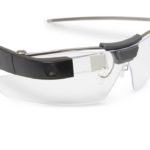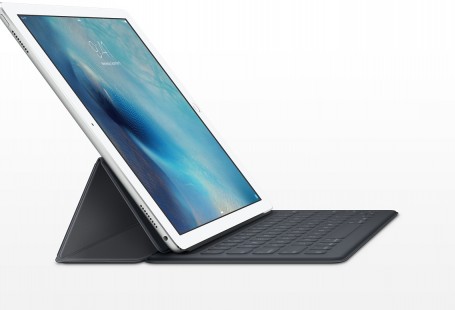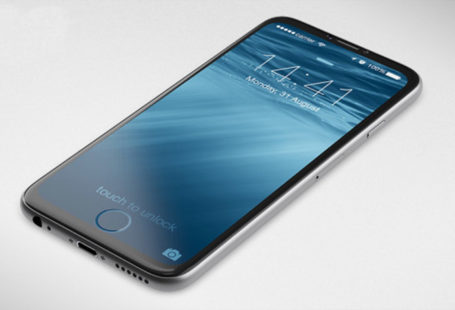In May 2017 Satya Nadella made a revealing comment. “Our next phones won’t look like phones,” he said, opening the door to a return to a field in which they had failed completely with Windows Phone and that Windows 10 also tried to conquer our smartphones.
It did not succeed on that occasion either, so Microsoft turned the page. It began to attack from the flanks, offering applications and services on platforms that had suffocated its own. He applied the old “if you can’t beat them, join them” and ended up having a minor position in a world in which they could have been leaders.
Yesterday, for an instant, it seemed to me that Microsoft was once again aspiring to the maximum.
Before that, of course, there was a more normal part of the conference. Panos Panay does very well on the stage -I would say he is the best in this area today- and told us the benefits of the new Surface Pro 7 (for me, not much to talk about) the Surface Laptop 3 (the 15 model with AMD is interesting, but expensive) and the promising Surface Pro X (interesting but expensive again). And then came the real stars of the event, of course.

First Panay surprised us with the Surface Neo, a device that we have been waiting for a long time. This device brought us closer to this new concept (or not so new) of a foldable tablet with dual screen. Less ostentatious and ambitious than Samsung’s Galaxy Fold or Huawei’s Mate X, but probably more “down to earth”. More realistic, less gimmick-y.
The product is really cool on the outside: two 9-inch screens that combined form a 13-inch display to which we can also add a mini keyboard (I guess the writing experience on it will be discreet at best) and the stylus that Microsoft insists on transform as the center of the man-machine experience. All great in appearance, because that’s what these presentations are for: to make everything look great.
When it seemed like it was all over, the Microsoft own’s OMT (One More Thing) moment. It wasn’t like that, but it was totally like that. Panay said “thank you, goodbye“, pretended to retire, and then came back and said with a very serious attitude “We’re not done yet“. And then, the bombshell: a video that I would have like to end after 45 seconds. Just until the girl says “Hello?
From there, the fiasco. At least for me. The Surface Duo is not the resurrection of Windows Phone or Windows 10 on mobile phones. No.
It is the definitive surrender of Microsft on mobiles. That’s what it is.
The reason, of course, is that after those 45 seconds it became clear that the Surface Duo is an Android phone. Just like that. I don’t care if Panos Panay insists that we don’t call it that and wants us to say that “it’s a Surface”. It’s not. If it goes with Android, it’s not. Or it’s not that as a whole. Suddenly Surface, the platform that got Microsoft to partially control the hardware and software -as Apple does totally with its products, and as Google does partially with Pixel and Chromebook- lost some strength. It surrendered to Android.
It gave up.
I understand the strategy. The Android ecosystem is fantastic, so if you want to offer a mobile device you have to take advantage of it to be part of those hundreds, probably billions of Android users. That’s a very strong temptation: to be a rebel doesn’t usually work in technology (or life, for that matter), so the fact that Microsoft ends up making an Android device is, to a certain extent, logical.
The problem is that this is not going to make the Surface Duo differential. I’m pretty sure about one thing: by the time the Surface Duo appears there will be several products advertised or available with the same form factor. Let’s see, if Samsung and Huawei have already managed to bring out devices with flexible screen, rather more technically complex, I doubt that any manufacturer (and here I will emphasize the chinese ones) will take advantage of the idea to have its particular Xiaomi Duo, Oppo Duo, Realme Duo or OnePlus Duo. Microsoft will have competitors everywhere, and it won’t be able to differentiate itself too much. It has not succeeded with their Surfaces with Windows 10, which are great but have equally great competitors, and will have even less chances on the mobile segment.
It really makes me angry. During those 45 seconds I thought that Surface Duo was actually the new Microsoft phone with Windows 10 (or Windows 10X, I don’t care). But it isn’t that. It’s another Android phone.
And then there’s the other thing. I wonder if this, again, is a solution looking for a problem.
Lately I’ve been talking a lot about this, but it’s something that’s increasingly relevant to me when talking about any product. Does this in my hands really solve a problem? Does it make my personal or professional life more comfortable and better? Or is it simply a product that the manufacturer has made just because he could?

Neither the Surface Neo nor the Surface Duo seem to me to be products that I would buy quickly and willingly. Neither the Galaxy Fold or the Mate X, of course. Price is the first reason against it, but there are some more important questions I’d like to ask Nadella and Panay. Questions I’d like them to answer me,.
Why should I buy a Surface Neo instead of a convertible or a conventional laptop? What does it do better? And logically, the same with the Duo: why should I buy a Surface Duo instead of a conventional smartphone? What does it do better?
Okay, you’ll tell me the answer is easy for these guys. Those products are perfect not only for consumption scenarios, but also for productivity.
But I don’t see what they bring over those other products we already have. Neither to consume content, nor to produce it. Only in very, very specific scenarios could a product like the Neo be interesting to use for production. And with the Duo I don’t need you to tell much more. Typing there for an hour would be pretty much a nightmare. And the same goes with the Neo, I insist, which reminds me of the UMPC of the past -which in turn are the evolution of the Nokia Communicator- although they bring the advantage of the double screen and the virtual or physical keyboard (like this wonderful Sony VAIO P below).

I can do something quite similar to what the Neo and the Duo propose with the products that we currently have nowadays. I can take a Bluetooth mini-keyboard with me, something like the Logitech K480 for example, and work with the smartphone or tablet writing texts quite decently. There are smaller keyboards and foldable keyboards, so what’s the advantage?
The double screen, of course. Double space to work and enjoy. Fantastic.
Except for the drawbacks. For example, having to unfold the phone or tablet over and over again when we want to take advantage of that extended mode, which will also have a great intermediate hinge not so great for watching movies or playing games full-screen by combining those two displays.
Or the other big problem: the cameras. I don’t know if you’ve noticed, but the Surface Duo has just one front camera on one of the screens. This could change and I guess it will, but taking pictures with these devices isn’t going to be as easy or straightforward as it is with a smartphone. It seems that simple operation could be not that straightforward or quick, and although it is early to make judgments, the form factor does not favor having a good photographic mobile, and harms that important function that differentiates the best (and more expensive) smartphones we have each year.
It is true that there are striking features and there is certainly value in a proposal that helps make the experience more productive, but what Microsoft has showed me does not make me think that this is better than what we have today. It’s something I did think about when I saw the iPhone, for example, but that feeling is null with the Surface Neo and the Surface Duo. They’re just cool products, that’s all.
And in the case of Duo, I insist, they are an unconditional surrender of Microsoft in a segment that it has never known how to or been able to conquer.
What a tragedy.


